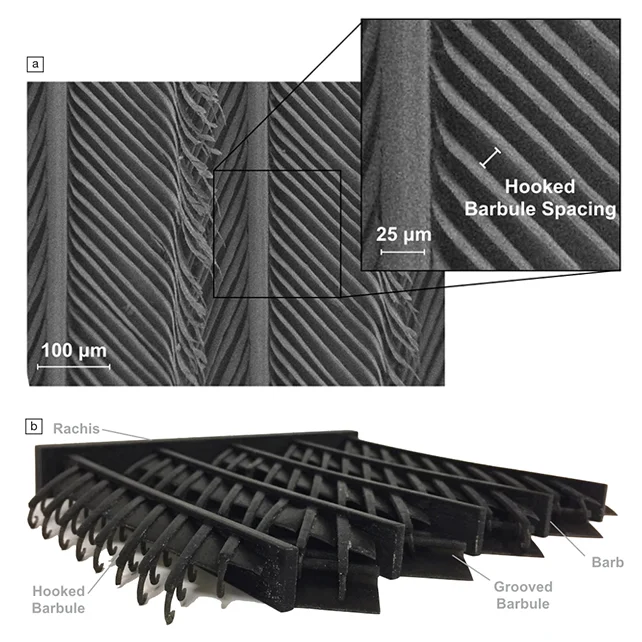Spider dragline silk acts as a rotational actuator
(a) Torsional actuation of N. pilipes dragline silk (98 mm in length, 3.1 ± 0.1 μm in diameter) to relative humidity (RH) cyclically changing from ~40% to ~100%. The horizontal dashed lines show the RH thresholds for the triggering of twist. The vertical dashed lines show the start and end of the induced twist. (b) Hydrogen bonds shown in blue in spider silk proteins (i) MaSp1 and (ii) MaSp2 molecules. Credit: Science Advances
By Stephen Riffle March 22, 2019
To most onlookers, a small rotating pendulum might have seemed uninspiring. To Dabiao Liu and his fellow researchers, however, the pendulum’s motion signified the opening of a door—one that may lead to synthetic muscles, soft robotics, and numerous other applications. Liu, a materials scientist at Huazhong University of Science and Technology, China, co-authored an article published earlier this month in Science Advances where he reported that a single thread of spider dragline silk (independently tested from three different spider species) could generate enough rotational force to move a pendulum weighing more than 36,000 times its own weight. In other words, Liu and his research team had shown that spider dragline silk could act as a rotational actuator.
Read the full write-up on MRS Bulletin.
Read the article in Science Advances.



